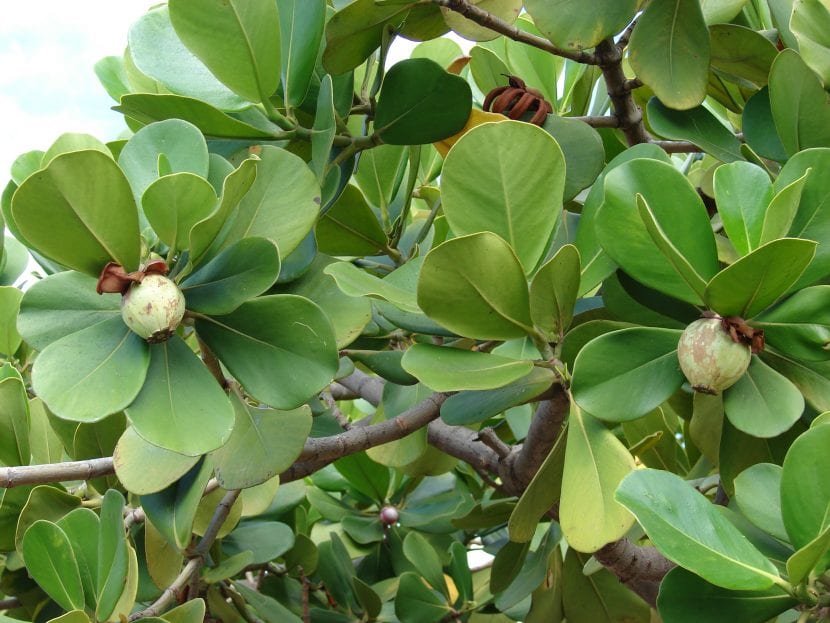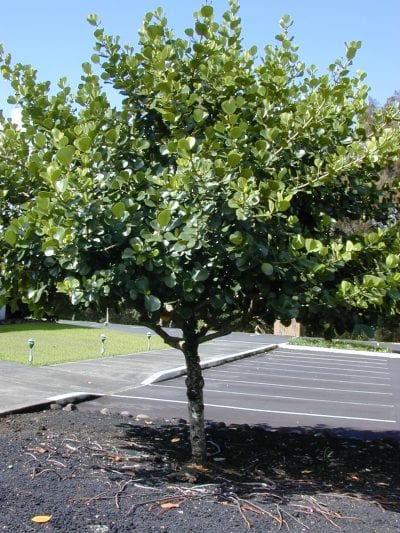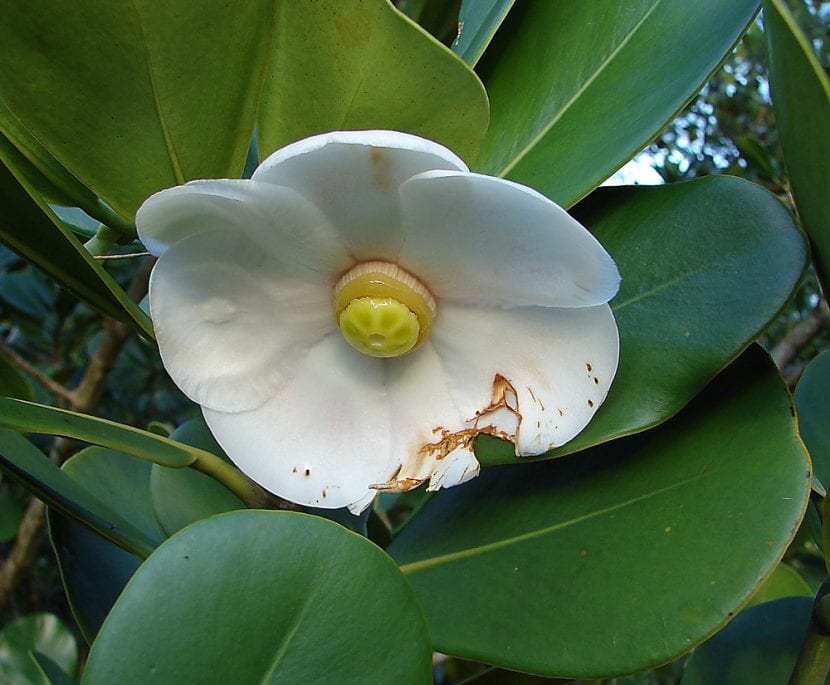
If you live in an area without frost and you are looking for a fast-growing tree that tolerates salt and also produces very decorative flowers ... we recommend copey. Not only is it beautiful but it is one of those plants that provide a very pleasant shade.
Would you like to meet him? Well, do not hesitate: then I will tell you how to have it perfect.
Origin and characteristics

Our protagonist it is a semi-epiphytic tree (can grow as a climber depending on habitat conditions) evergreen whose scientific name is clusia rosea (before Clusia Major) which is popularly known as copey or wild mamey. It is an endemic plant of the Caribbean, Bahamas and the West Indies that reaches a height of between 5 and sometimes 20 meters. Its leaves are ovate, wide, 6-18cm x 6-12cm, thick, with smooth margins, dark green on the upper surface and lighter on the underside.
The flowers are 7 to 10cm in diameter, and are composed of 7 pink to white petals. The fruits are round, 9cm in diameter, and have orange pulp that birds love.
It is a species threatened by loss of habitat.
What are their cares?

If you want to have a copy, we recommend that you provide it with the following care:
- Location: outside, in semi-shade.
- Earth:
- Pot: universal growing substrate mixed with 30% perlite. It is important to know that if it is grown in a container, its height will not exceed 2m.
- Garden: fertile, with good drainage. It is also salt tolerant.
- Irrigation: frequent, it is necessary to avoid that the earth dries up. In cold seasons, the frequency of irrigation must be reduced.
- Subscriber: fertilize throughout the growing season (warm months) with ecological fertilizers.
- Planting time: in spring.
- Rusticity: it does not support cold or frost. The minimum temperature it supports is 10ºC.
Did you know the copey?
Thanks for this type of initiative, the plant world is fascinating. I am an engineer. Agrónono and I do not stop marveling at them daily
We are glad to read that you like the blog 🙂
I live in Jardín de Dota.
The Copey appears anywhere in our garden, we have removed some of them because they grow many.
It is a very pretty tree and I have a grown one, I would like to put it inside the house.
we have temperatures up to 10 degrees but not always
Will it be possible?
Hi Lourdes.
Precisely I have one indoors, and it goes very well. Of course, you have to put it in a room where there is a lot of clarity, a lot of light.
A greeting.
I would like to know how to keep a copey without growing too much, how to prune it and that the trunk always has leaves.
Thank you very much
Hello Sofia.
You can prune it in late winter, or shortly after the dry season if your area does not have all four seasons properly 🙂
Remove the newest leaves from all the branches, this will allow lower branches to sprout. These prunings must be small, since if, for example, you cut its branches in half in one go, it is most likely that it will weaken. It is better to reduce its length little by little, over the years.
Regards!
I would like to know how to prune a potted copey so that it branches more.
Hi Eda.
You can cut the branches a little (about 5 centimeters), this will force him to remove lower branches, at the end of winter.
Greetings.
I did not know him, but I had heard the name, in fact in my city there is a town that bears that name.